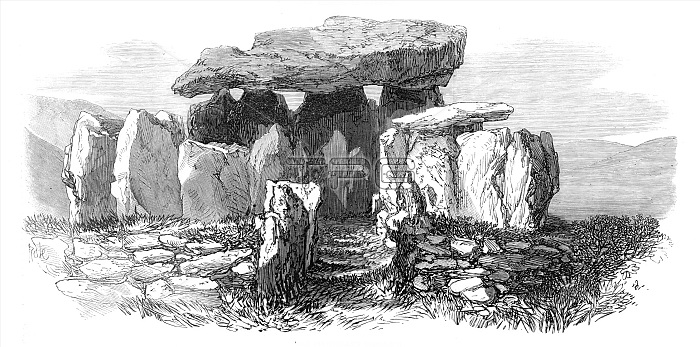
Prehistoric Remains in Jersey: the Pocquelaye Cromlech, 1870. La Pouquelaye de Faldouet, Neolithic passage grave built c4000-3250 BC. The only portion that was visible twenty years since was the huge capstone...About the year 1848 excavations were made which brought to light the side blocks; and last year the cromlech was still further denuded, and its remains exposed...The name of Pocquelaye, or "fairy stone", is that given to the huge capstone by the superstitious peasantry of the island, who believe that the elves and sprites used to hold their revels on this stone...In this cromlech, besides the large western chamber covered in by the chief capstone, are several side cysts, or chambers...A narrow avenue of stones forms an avenue from the east, at the entrance to which are the remains of two circular walls; but the exact uses of these are scarcely understood... It is only recently that public attention has been turned to the unprotected state of the monuments and relics of past ages in our country...[A report] brings to light the deplorable results of our past inattention to these valuable antiquities. It appears that wholesale destruction of them has taken place within the last century. From "Illustrated London News", 1870.
| px | px | dpi | = | cm | x | cm | = | MB |
Details
Creative#:
TOP29943280
Source:
達志影像
Authorization Type:
RM
Release Information:
須由TPG 完整授權
Model Release:
Not Required
Property Release:
Not Required
Right to Privacy:
No
Same folder images:

 Loading
Loading